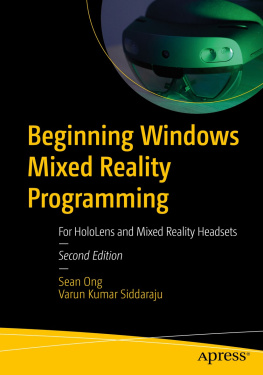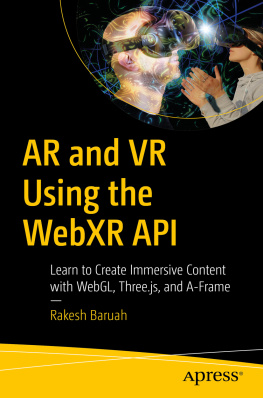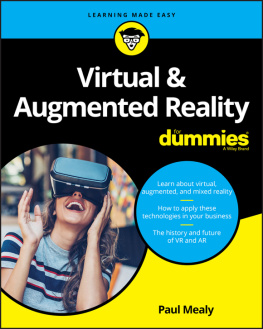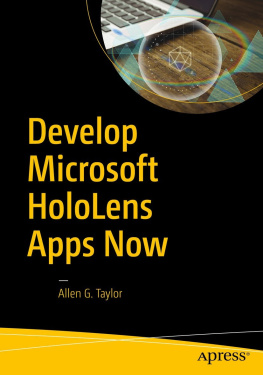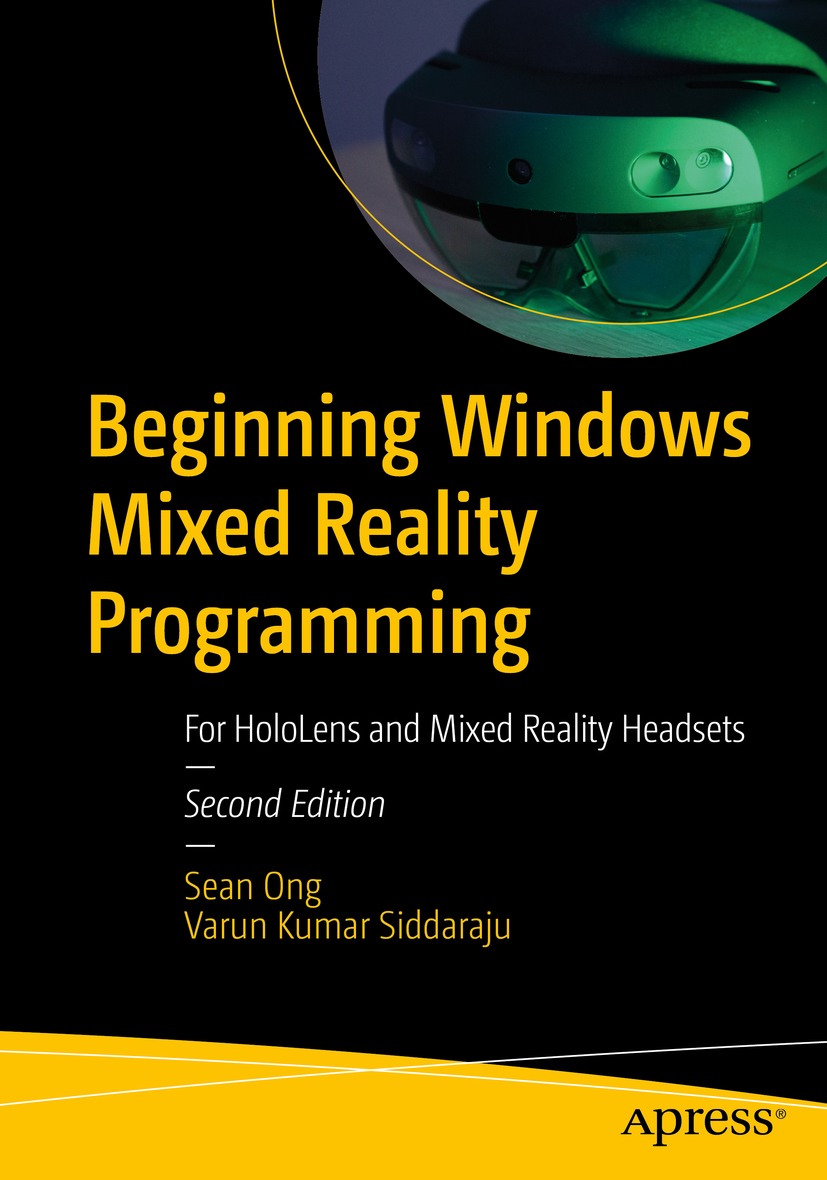Sean Ong - Beginning Windows Mixed Reality Programming: For HoloLens and Mixed Reality Headsets
Here you can read online Sean Ong - Beginning Windows Mixed Reality Programming: For HoloLens and Mixed Reality Headsets full text of the book (entire story) in english for free. Download pdf and epub, get meaning, cover and reviews about this ebook. year: 2021, publisher: Apress, genre: Home and family. Description of the work, (preface) as well as reviews are available. Best literature library LitArk.com created for fans of good reading and offers a wide selection of genres:
Romance novel
Science fiction
Adventure
Detective
Science
History
Home and family
Prose
Art
Politics
Computer
Non-fiction
Religion
Business
Children
Humor
Choose a favorite category and find really read worthwhile books. Enjoy immersion in the world of imagination, feel the emotions of the characters or learn something new for yourself, make an fascinating discovery.
- Book:Beginning Windows Mixed Reality Programming: For HoloLens and Mixed Reality Headsets
- Author:
- Publisher:Apress
- Genre:
- Year:2021
- Rating:5 / 5
- Favourites:Add to favourites
- Your mark:
Beginning Windows Mixed Reality Programming: For HoloLens and Mixed Reality Headsets: summary, description and annotation
We offer to read an annotation, description, summary or preface (depends on what the author of the book "Beginning Windows Mixed Reality Programming: For HoloLens and Mixed Reality Headsets" wrote himself). If you haven't found the necessary information about the book — write in the comments, we will try to find it.
Beginning Windows Mixed Reality Programming, 2nd edition clearly explains all the nuances of mixed reality software development. You will learn how to create 3D objects and holograms, interact with holograms using voice commands and hand gestures, use spatial mapping and 3D spatial sound, build with toolkits such as Microsofts Mixed Reality Toolkit and Unitys AR Foundation and XR Platform, create intuitive user interfaces, and make truly awe-inspiring mixed reality experiences. This newly revised edition also includes updated content for HoloLens 2 development, including tutorials for new interactions such as hand tracking and eye tracking.
What You Will Learn
- Prototype ideas quickly for the HoloLens 2 and Windows mixed reality devices
- Get started with Unity, the preferred tool for developing 3D experiences
- Locate and import 3D models for your project, or make your own
- Use spatial sound, voice commands, gestures, hand tracking, and eye tracking
- Build with Microsofts Mixed Reality Toolkit and other toolkits to make apps the easy way
- Publish to the Windows Store and make money from your app
Who This Book Is For
Programmers looking to quickly learn how to create experiences for HoloLens 2. Also for programmers interested in building applications for the growing crop of virtual reality devices that support the Windows Mixed Reality platform.
Sean Ong: author's other books
Who wrote Beginning Windows Mixed Reality Programming: For HoloLens and Mixed Reality Headsets? Find out the surname, the name of the author of the book and a list of all author's works by series.

